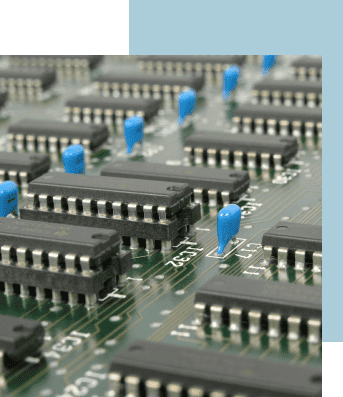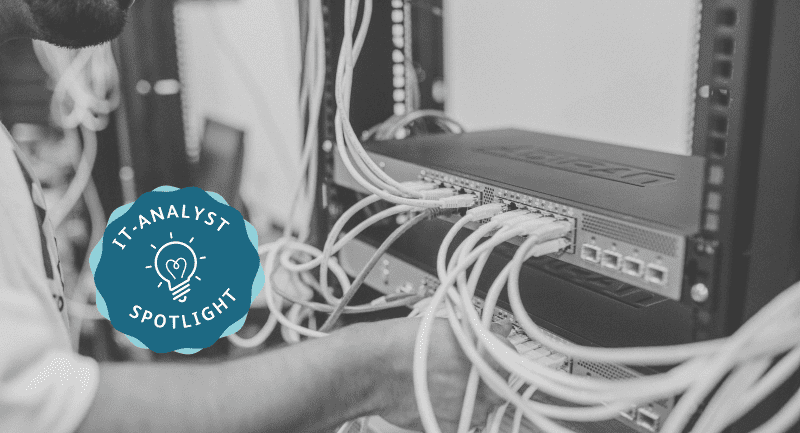
How edge computing is driving the energy transition
At a time when the smart home is becoming increasingly important, edge computing plays a crucial role in the efficient management and control of building functions. The integration of edge computing into the smart home enables decentralized data processing directly at the refrigerator or thermostat, which enables faster response times and thus more convenience and automation. And that saves a lot of energy.
Where does edge computing come from?
Edge computing was created in response to the growing challenges and limitations of cloud computing, particularly in terms of latency, bandwidth usage and data protection. With the exponential increase in devices that are networked as part of the Internet of Things (IoT) and the need for real-time data processing, it quickly became clear that centralized data processing in the cloud is not always ideal.
Edge computing brings data processing closer to the point of data generation – i.e. to the “edge” of the network – to enable fast, efficient and secure data analysis. This shift towards decentralized processing to smart meters marks a significant change in the way data is handled in networked systems. In short, edge computing actually forms the basis for numerous modern technologies in the smart home.


How has the smart home developed so far?
Smart home refers to automated living concepts in which electronic devices and systems are networked with each other and can be controlled via a central unit. Examples of smart home applications include intelligent thermostats that automatically adjust the room temperature, intelligent lighting systems that can be controlled via voice commands and smart security systems that can be monitored via smartphone.
Earlier generations of networked devices were often limited to simple, reactive tasks such as switching the lights on or off and regulating the room temperature. Today’s smart home assistants, on the other hand, achieve a new level of intelligence and complexity by integrating various components and services and distributing tasks across different systems. In an increasingly networked world of smart home technologies, the importance of machine learning is constantly growing, especially for functions such as image recognition, for example for automatic door opening.
Which smart home application examples are the most popular?
Voice assistants make it possible to carry out almost all activities that are usually controlled via keyboard, mouse or touchscreen by voice. According to the Bitkom study “The future of consumer technology 2023“, selecting music tracks or radio stations by voice (86 percent) and controlling smart home devices, such as switching on lights or regulating the heating (80 percent), are popular application examples. Users also use voice assistants to make calls (70 percent), call up traffic news (52 percent) and make search queries (48 percent).
The Federal Ministry for Economic Affairs and Climate Protection (BMWK) is aiming to accelerate the introduction of intelligent metering systems (iMS), also known as “smart meters”, with a draft law to restart the digitalization of the energy transition. According to a PwC study, 71 percent of the responsible metering point operators have already started installing these technologies, a huge increase on the 49 percent of the previous year. Despite this progress, however, the study also shows that there is still a considerable need for action to reverse the trend in the digitalization of the energy transition. Among other things, smart meters make it possible to switch off appliances when they are not in use and only switch them on again when the electricity price is cheaper. This can save households energy and costs, as the consumer advice center has determined.
What are the advantages of edge computing in the smart home?
Edge computing offers numerous advantages not only for companies, but also for end users in the context of the smart home and the Internet of Things (IoT). The direct processing of data at the point of origin enables faster response times, which is particularly important for safety applications such as automatic smoke detectors and fire doors. The reduced latency due to the proximity of data processing optimizes the control of critical building systems. Edge computing also contributes to increased data protection and security by enabling local data aggregation and analysis, which ensures the transmission of only relevant information and reduces the risk of data breaches. Last but not least, the intelligent control of energy producers and consumers through edge computing contributes to energy efficiency and environmental protection by making optimum use of resources and reducing energy costs.


How can edge computing reduce energy consumption?
By reducing the amount of data transferred to and from the cloud, edge computing contributes to lower energy consumption and more efficient use of IoT devices. Edge computingnot only lowers operating costs for cloud service providers, but also promotes sustainability through reduced power consumption and lower greenhouse gas emissions. In addition, edge computing improves processing time by minimizing the number of servers, increases the economic sustainability of companies and reduces their environmental impact by reducing their carbon footprint.
Conclusion: Edge computing enables the future of home automation
Overall, it is clear that edge computing is playing a crucial role in the smart home by revolutionizing the way data is processed in networked systems. Smart meters not only enable faster response times and reduced latency for security applications, but also increase efficiency when dealing with smart home devices. The intelligent control of energy consumers not only contributes to optimized building automation, but also makes an important contribution to energy efficiency and environmental protection. In an increasingly networked world of smart home technologies, edge computing is therefore a fundamental basis for the development and implementation of modern solutions.
Want to know more about edge computing?
Rethinkinging corporate IT – with a hyperconverged infrastructure
Hyperconverged infrastructure (HCI) Rethinking corporate IT – with a hyperconverged infrastructure Manage…
Predictive Maintenance: AI and Edge as a dynamic duo
Predictive Maintenance AI and Edge as a dynamic duo In today’s industrial…
How edge computing is driving the energy transition
How the provider landscape is reshaping itself around Public Edge Services
REWE as a German AWS? How the provider landscape is reshaping itself…
Edge computing and AI
Cloud Migration in Germany 2023
Cloud Migration in Germany 2023 Why the strategy discussion is misleading Cloud…





